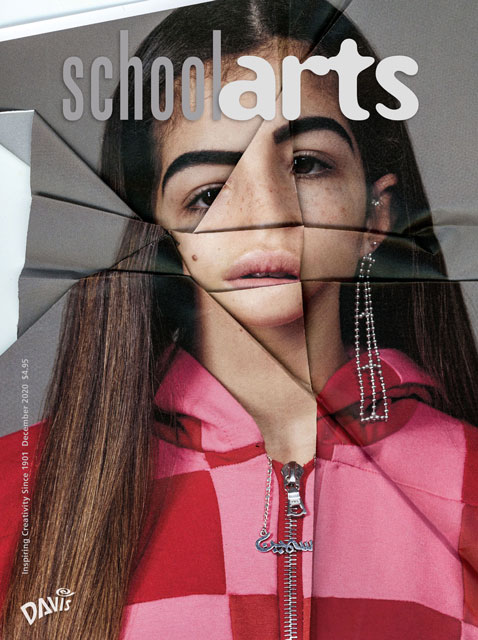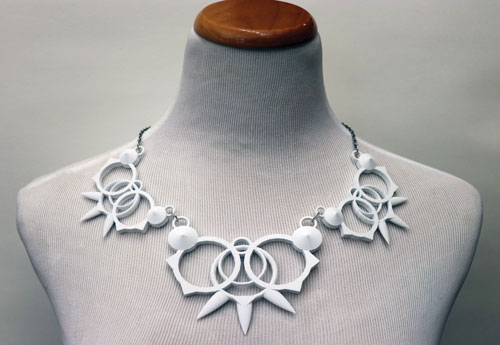 |
| Josh H., necklace. |
Two years ago, I applied for and received a grant to purchase a 3D printer for my classroom, and a whole new world opened up, full of possibilities for my students to create work in both the digital and physical realms. One way we have leveraged this learning opportunity to full effect is through the creation of wearable works in the form of jewelry.
Getting Started
Because I work in a choice-based, thematic-driven classroom, students are able to choose which materials they want to work with to create their art. Now that we have a 3D printer in the classroom, it is important that mini-demonstrations and optional in-depth exploration is available to students. There are two programs that I cover with students: Tinkercad (tinkercad. com) and Morphi (morphiapp. com). Both offer easy-to-use options of manipulating basic shapes on a platform that can be translated into a 3D print.
To get students familiar with these programs, I have them work in pairs and experiment with placing, stacking, and resizing basic geometric forms before creating any designs. The opportunity to work with a partner as they learn a tool offers students the chance to question each other, learn from each other, and celebrate with each other as they overcome the challenge of trying something new.
Designing Jewelry
I challenge students interested in pursuing 3D printing to consider basic forms such as spheres, cones, or cubes as the building blocks for wearable works. Students use the software to experiment with sizing, overlapping, and using cut-outs as they design earrings, pendants, or other wearable pieces.
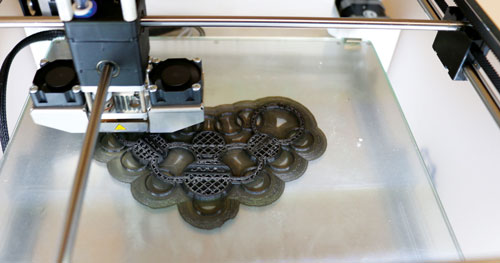 |
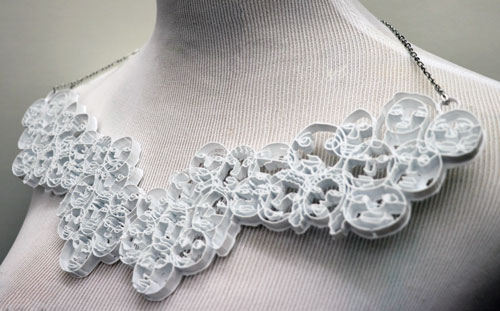 |
| Top: Sophia B., 3D printer in action. Bottom: Chelsea W., necklace. |
Throughout the process, trial and error to discover what works best is key. Having students create designs, test print them, and make needed revisions allows them to work as artists do and really evokes the design thinking that takes place in many creative careers. This is also a great opportunity to show students how to transfer files to other drives and slice their works in a program like Cura before sending it to the 3D printer.
Celebrating Success
Once students are done with their designs and they are successfully printed, they use the dress form in our classroom to photograph their work and post it to our school’s online gallery; some even enter their works into competitions. Over the past two years, we’ve had students win multiple awards in the Scholastic Art Awards program, including a National Silver Medal in 2017.
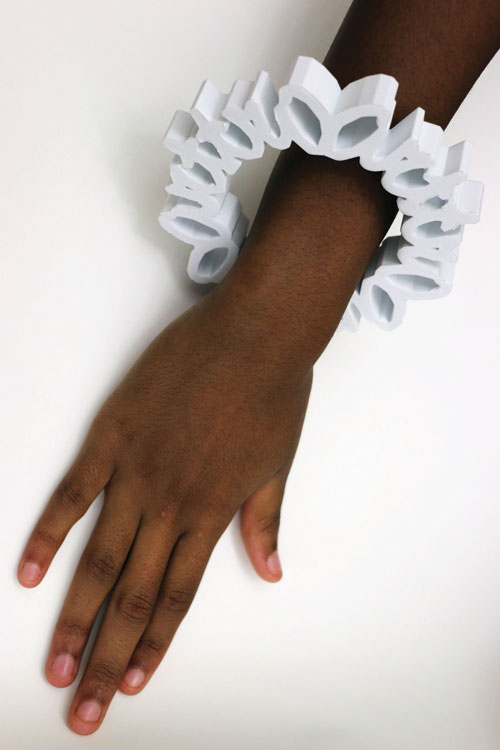 |
| Allison V., bracelet. |
Even better than awards or recognition is the connection students can make between this new method of creating and careers. This is a great way to get students to think beyond their time in my classroom and start to map out ways they can apply their learning in a creative field when they enter the work force.
Janine Campbell is an art teacher at Byron Center West Middle School in Byron Center, Michigan. janinetcampbell@yahoo.com
NATIONAL STANDARD
Creating: Generate and conceptualize artistic ideas and work.
RESOURCE
Author Blog: bcwmsart.weebly.com
View this article in the digital edition.
